Planning a trip to Paris and feeling overwhelmed by the online noise? You’re not alone. As the owner of The Tour Guy, with a team of over 100 guides in Paris, I recently conducted in-depth research by interviewing locals from various shops and restaurants. This article distills that knowledge, offering insider insights to navigate Paris like a pro. Enjoy!
Pro Tip: This article is a table of contents for all our information in Paris. It’s a good article to bookmark in your browser if you are planning a trip to the city of lights.
Jump to Section
- Insider Explanation of Paris
- When to go & what to pack
- Where to stay & how to get around
- What to do & planning your day
- What to eat & where
Paris’s rich and tumultuous history has shaped it into one of the world’s greatest destinations. Unfortunately, many visitors leave saying, “It didn’t live up to my expectations.” However, that disappointment often stems from inadequate planning rather than the city itself (and we want to help with that).
As the owner of The Tour Guy, I conduct considerable research to develop and sell tours and activities in major cities that I love, including Paris. Our mission is to help travelers unlock the full experience of their destination so that they don’t leave a vacation feeling disappointed. And we do this for the world’s greatest destinations, including Paris.
While I hope you’ll consider our tours, sharing this research is my passion, regardless of your purchasing decision. Inside, you’ll find my unbiased recommendations on Paris—the same insights I share with family and friends.
Paris Insider Explanation
The simplest way to describe this complex destination is, “Paris is Paris”—a city of lights, love, art, architecture, betrayal, revolt, beauty, destruction, and happiness.
Parisians take immense pride in their monuments, art, and culture. While some travelers find them rude, our tour guide Justine aptly describes them as “aloof.” Aloofness, often perceived as rudeness by English speakers, simply reflects a cool and distant demeanor that Parisians adore.
It’s important to consider where and how you interact with Parisians. Understanding their cultural norms can significantly enhance your experience. I consider myself friendly and I have had many positive memories from my experiences in Paris.
If you visit the right places and respect their idiosyncrasies, you’ll likely have a rewarding experience. This guide will help you navigate the city through the insights of those who know it best; locals.
When to Go | What to Pack
After surveying customers who had recently left Paris, we realized that a large concern was when to plan the trip and more specifically, what to pack. It makes sense, Parisians have strong fashion sense and you want to put your best foot forward.
I went to Paris and interviewed Parisian tour guides who work for us, our local staff in Paris, 100s of travelers, and a female executive on my team (women’s packing list) who I trust for style.
When to Go
Short Answer: Late April, May, or September (provided via a survey of 53 Paris tour guides & locals).
Paris tends to be cooler than cities like Rome, averaging 10 to 12 degrees Fahrenheit (5 to 6 degrees Celsius) and lower throughout the year. The average high rarely exceeds 80 degrees, though hot spells can occur in late June, July, and August.
While I prefer warmer climates, I appreciate the mild temperatures of cities for vacations, allowing for stylish dressing without discomfort. So, when is the best time to visit Paris?
After speaking with our tour guides, the consensus is to visit in spring or fall, particularly late April to early May and September. Spring is especially vibrant, as locals are happiest enjoying outdoor live music and cocktails.
Additionally, April, May, and September typically see the fewest rainy days, making for a more pleasant experience.
- Jan, February, Early March: Likely avoid Paris unless you like cold and rain or don’t want crowds.
- Late March Early April: Hit or miss. Could still be very cold. Trees don’t start to blossom until early April which makes the city more beautiful.
- Mid-April & May: Favorite season to visit from locals. Dress in layers. Stylish layers…it’s Paris.
- June – August: Warmer and beautiful months, but the city is crowded. I personally would go in early June.
- September: Many locals picked this season as their favorite, similar to April/May.
- October – December: The city is already considerably colder than September, with high rainfall.
- Christmas/New Year: An amazing time to visit any European destination.
What to Pack
Short answer: Your most stylish clothing.
You likely have heard that all the cafes in Paris face their chairs outwards so you can people-watch. People-watching was invented in Paris. What does that have to do with packing?
In the 17th century, Louis XIV installed streetlights throughout the Paris cityscape, something that had not been popular in Europe since Roman times. If you were from another city in Europe, you had to go inside when the sun went down or risk many evil doings.
When the street lights were installed, European people flocked to Paris to enjoy the “city of lights.” Later, sidewalks were installed to add an additional element of safety and elegance to the city. Yes, prior to this, you would walk in a muddy street.
“Walking around” was invented in Paris, a wealthy and fashionable city for some. Where there are rich and fashionable people there are other rich people that want to see what they are wearing. This is why cafes started turning their chairs out towards the streets (for fashion).
Long story long, looking for a great place to break out all your coolest, most fashionable, maybe risky outfits? Paris is 100% the place.
Men’s packing list for Paris
The only rule, which is the rule in all of Europe, is don’t wear gym shorts or a “hoodie” around town unless you’re 15 or you don’t care.
Clothes I usually pack:
- 1 pair of nice (very nice) sneakers & 1 pair of dressier shoes (spray all shoes with waterproof/protectant)
- 1:1 ratio of slacks to jeans
- 1:1 ratio of button-down shirts & sweaters
- 1 jacket for every 2 days
- 2 pairs of socks each day (could get sweaty)
- A extra pair of underwear in case you have an accident (my youngest daughter’s recommendation)
Other stuff I bring:
- Travel shoe erasers. I’ve gotten pretty intense about keeping my white shoes clean on the go.
- Shrinkable packing cubes. I am not particular about any brand as long as they have a zipper that makes them shrink.
- A great budget. Paris is cool. Save up money and do cool things there. Eat well, shop, and splurge a bit.
A big question is, “how much cash should I bring to Paris?” The last time I went, I forgot my wallet and made out fine just using Apple Pay. Having about 40€ per day for tipping and small purchases isn’t bad.
Women’s packing list for Paris:
French women are the masters of casual chic. Contrary to popular belief, the women in Paris are not glammed-up and tottering around in high heels wearing the latest trends. Rather, they stick to classic, well tailored neutrals in natural fibers with stylish flats made for walking. Athletic gear is for athletics only. Leave your polyester and florals at home.
Clothes to pack:
- 1 pair of stylish, comfortable sneakers & 1 pair of versatile flats or low heels (low boots for fall/winter)
- 2 pairs of jeans in different styles/washes
- 1-2 pairs black pants
- Mix of blouses, lightweight sweaters, and a versatile dress or skirt
- 1 classic blazer
- 1 leather jacket or trench coat in a neutral color (for fall and winter)
- Tights or stockings (weather dependent)
- Scarves for layering and style
Other essentials:
- Travel-sized stain remover pen
- Foldable tote bag for shopping
- Crossbody bag for daily use
- Small clutch or evening bag
- Universal plug adapter
- If bringing hair styling tools from home, make sure they are labeled Dual Voltage (very important!)
- A generous budget. Paris is for indulging in great food, fashion, and experiences
Where to Stay | How to get Around
Picking a place to stay and getting around go hand-in-hand. The below opinions are amalgamated from experienced travelers and locals that I trust from 32 to 55 years of age.
Where to stay
Short answer: Saint-Germain-des-Pres or “Saint Germain”.
Read below for details on Saint Germain, or read our article on Where to Stay in Paris because maybe you are a different type of traveler than me. The article goes into detail on our favorite areas of Paris and which travelers they are best suited for.
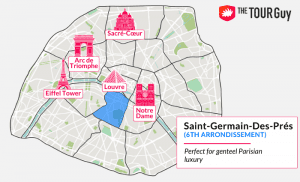
Why? People make the mistake of picking their hotel based on the attraction they are most excited to visit or a spectacular view. I pick my hotel based on the things I do at the beginning and end of my day. First, drinking coffee and last, drinking cocktails or wine. Therefore, your hotel should be near vibrant coffee shops, happening bars, great restuarants, and shopping. This way you’re always walking distance from the first and last stops of your day.
Saint-Germain-des-Prês is perfect for anyone 30 years+ who wants to be in the center but not deal with crowds. Almost every restaurant and bar you can walk into is going to be great or good enough. There is a great mix of boutique shopping, relaxed nightlife, and great food. You’re also very well connected by metro and RER throughout Paris.
Read our complete Where to Stay in Paris guide for more information and tips for other areas we recommend. Below are my top picks for where to stay in St Germain, all of which I have visited personally. We receive a commission from people who book hotels by clicking the links below. That said, almost every hotel in Paris is on Booking.com’s affiliate program, so our recommendations are unbiased. Using our links does help fuel these recommendations, so thank you.
Hotel Recommendations
L’Hôtel
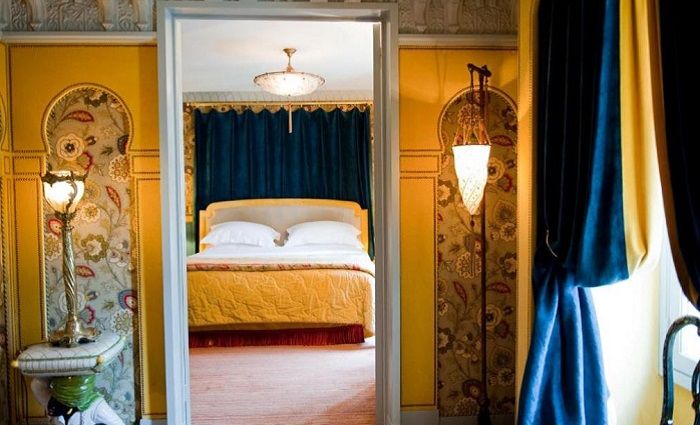
5 Star | €€€€ | Opulent Boutique | Lounge Onsite | Hammam and Sauna
L’Hôtel has a bold claim as the world’s first boutique hotel, so it’s worth booking a stay here to find out how well they attend to the smallest details of decor and service. You can relax at the end of your sightseeing day in the hammam or sauna, then enjoy a handcrafted cocktail at Wilde’s Lounge. It’s named for Oscar Wilde as this hotel was his last home on Earth.
Hôtel Madison
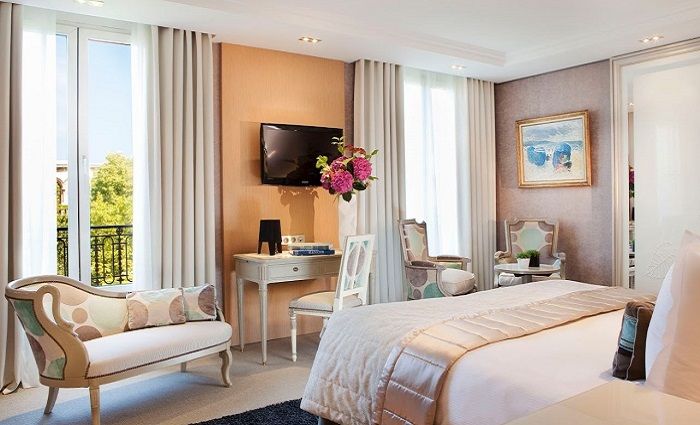
4 Star | €€€ | Half-Day Reservations | Massages | Family Friendly
Hôtel Madison is unique in that they offer half-day reservations for those who need a place to work or crash for just a few hours of a busy Parisian day. But if you’re here longer, you’ll also appreciate the room service, massage rooms, and amenities for kids! All-in-all, this is a great hotel that makes for a comfortable stay.
Hôtel Montecristo
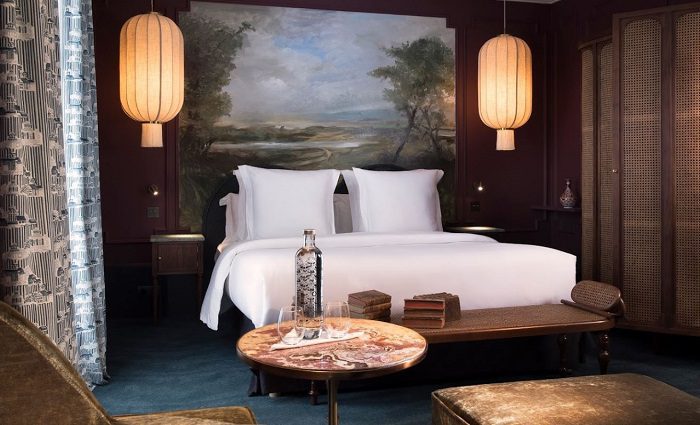
4 Star | €€€ | Traveler Favorite | Swanky Interior | Near Metro
This swanky hotel has those luxurious vibes without the price tag, which is why we (and many other travelers) love booking it. There’s a great pool you can enjoy and some rooms have extra seating. Plus there’s a bar onsite if you’re ready to call it a night
Citadines Saint-Germain-des-Prés Paris
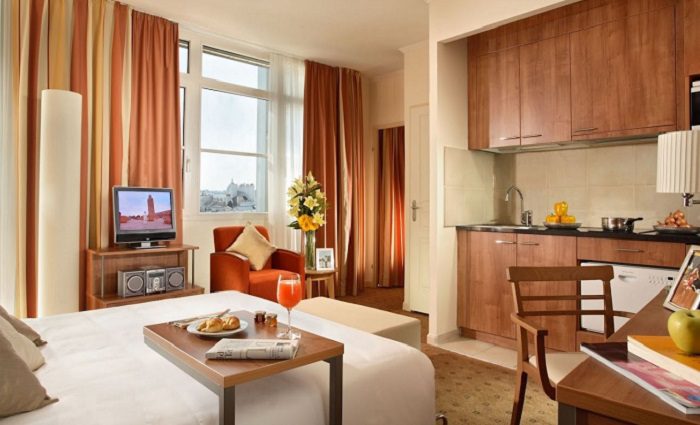
4 Star | €€+ | Apart-Hotel | Traveler Favorite | Ideal Location
Citadines is the perfect apart-hotel option for those who prefer having a kitchen and a little extra space while traveling. You can get free coffee in the lobby 24/7, and it’s ideally located near Pont Neuf (Louvre and Sainte Chapelle). The rooms are a little more dated than expected, but it’s a great deal for a suite in a great location.
Hôtel d’Aubusson
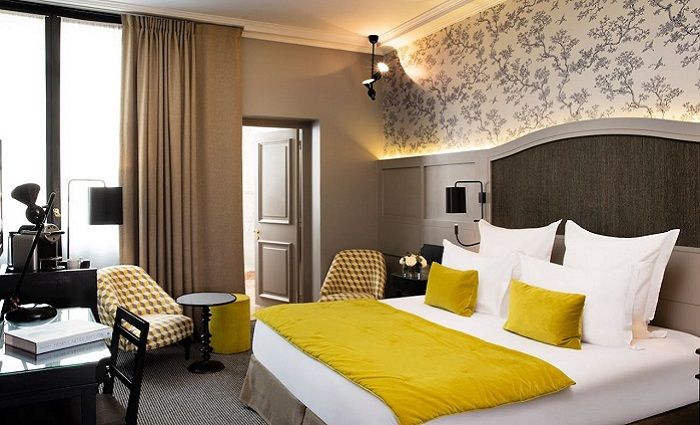
5 Star | €€€€+ | Modern Elegance | Great Concierge | Sauna and Pool
For an almost hidden but oh so classy stay in the Latin Quarter, you have to stay at Hôtel d’ Aubusson. This is a 5-star hotel at its finest with excellent service, a hammam, sauna, pool, tasteful and spacious rooms, plus the iconic 17th-century architecture. What’s not to love?
How to get around
Short answer: Using the Navigo app paired with Uber and walking is the way to go from the moment you land to the moment you leave. For the long answer, check out our guide on the Best Ways to Get Around Paris: Metro, Public Transport & Best Apps.
Paris Airports
Paris has three airports all located in different areas.
- CDG – Charles de Gaulle
- ORY – Aéroport de Paris-Orly
- BVA – Beauvais–Tillé Airport (avoid)
In the past, I would likely try to explain how to get to and from each of these airports. Today, it’s so easy to use Apple or Google Maps. There are also trains from both CDG and ORY. Grab a taxi or Uber outside if you don’t want to drag your things through the metro system. Uber is available in France. The last time I was in Paris, I didn’t bring any euros or take out any money. You can pay for just about everything with a credit card. I do recommend some cash, 40€ per day, for tips. You can even pay for all the Metropolitan system with the Navigo app.
Metropolitan of Paris
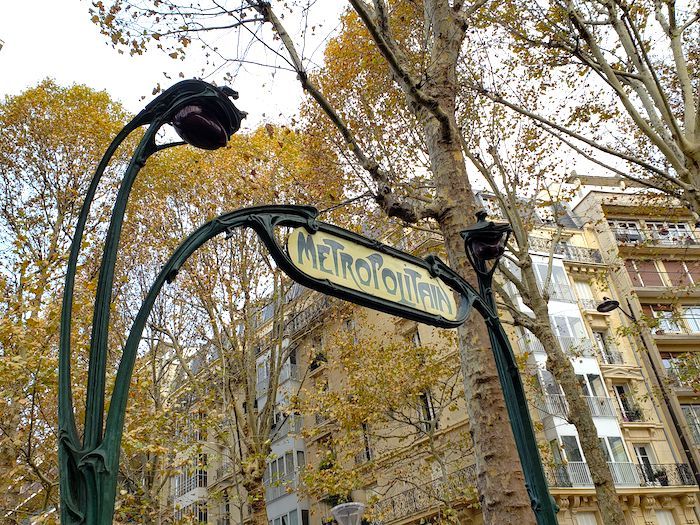
We surveyed 100s of customers and one of the biggest concerns was, “how do you use the metro?” The answer is to let your Apple Maps or Google Maps app figure that out for you.
Counting 16 different metro lines and 303 stops, Paris is a city where you can reach every area by train. Your quick answer to conquering the Paris Metropolitan is to download the RATP app. The Parisian metro reaches even areas right outside of the city and, if you have to go even further, several trains or RER lines are available.
Keep in mind, though, that the city center is not so big, so you should be able to reach places by walking. I get around Paris using Apple Maps (or Google). I decide whether to walk, take a taxi/Uber, or use the metro; it’s easy. Your map apps easily plan out the entire journey, and buying a ticket on your phone or using the machine is easy (credit cards are accepted).
What to Do & How to Plan
How to plan your days:
Looking for a detailed, almost copy and past itinerary for Paris? Check out our article on how to spend a weekend in Paris, or how to spend 3 days in Paris.
I like to plan my days around food and drinking as they are two of the three most important things in life. Remember, you want to pick a hotel in Paris based on proximity to the things you’ll do every morning and evening. First, drinking coffee and last, eating and/or having a drink.
I normally like to structure my days like this:
8 am – Out of my hotel to sit for coffee.
9 am – Meet a guide somewhere and enjoy a tour.
11am – Noon: Have post-tour coffee and snack. Lunch is later in Europe, and you don’t want to get hangry.
Noon – 1 pm: Walk around somewhere cool—Passage des Panoramas or somewhere else I can get lost. I like finding places with no cars (pedestrian areas) as doing so removes the stress of having to navigate around traffic. Read about some of the best things to do in Paris to fill your day.
1:30 pm: Lunch, again somewhere pedestrian. Consider a casual sandwich and Pernod in Place Dauphin. The only thing I like more than great food is decent food in a great environment.
3:30 pm: I normally like something structured again. Maybe I will get a ticket to Saint-Chapelle or plan to have a coffee in the Toulliere Gardens. I like to have a plan, even if that plan is to walk around somewhere, get coffee, and do nothing.
6:30 pm: Golden hour drinks. Check out our recommendations for best bars in Paris or the most family-friendly areas in Paris. Both contain great recommendations of places to sit down without hectic city traffic.
8:00 pm: Dinner. I am the king of not showing up for my dinner reservations. I’ll make them, and maybe I’ll go, but maybe I’ll call 30 minutes before because I found something more interesting. Either way, make reservations in Paris, and worst case, you’ll cancel.
From there, it’s up to you. I am normally in bed by 11:00 pm as I want to enjoy my days more than the nights. If you’re looking to spend more than a weekend in Paris, check out our guide on how to spend 4 days in Paris.
What to Eat/Drink & Where
Eating and drinking in Paris is essential not only for nourishment but also for experiencing the city’s rich culinary culture and social life. Knowing where to go for the best food and drinks in Paris lets you enjoy the real flavors and fully soak in the city’s atmosphere. Here are my top recommendations of what to eat in Paris and where:
Boeuf Bourguignon
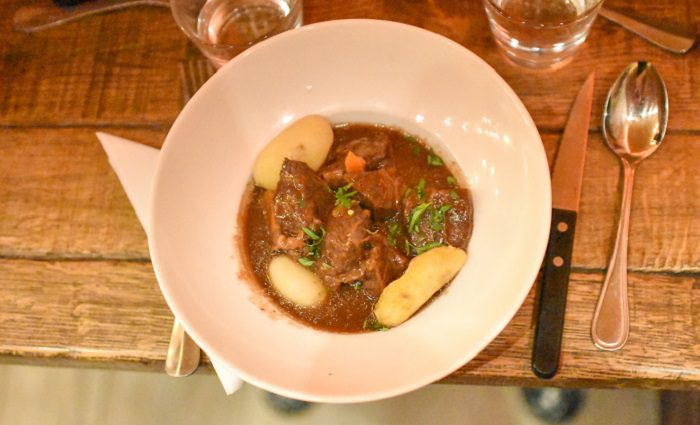
While this is not considered a “Parisian” dish, it has become one of the go-to dishes for the city of lights. After meeting with dozens of local guides in Paris, Boeuf, or Beef Bourguignon was the #1 recommended dish to try in Paris. It’s delicious and hearty, which leaves you feeling great in this climate.
Where to get it: I recently ate Boeuf at Chez Fernand, which was the perfect setting for the meal – Saint-Germain-des-Prés
Camembert and Brie Cheese
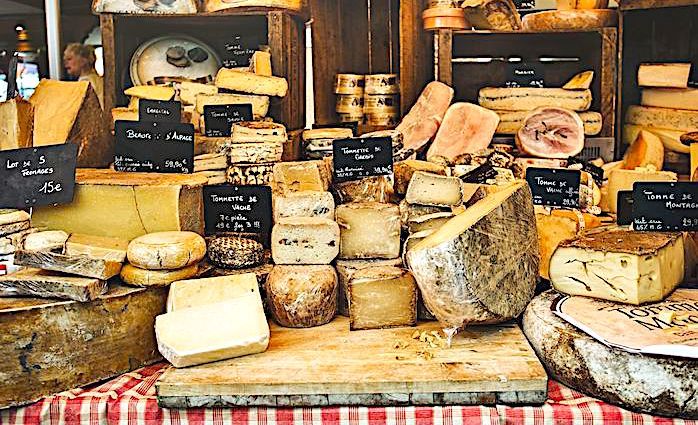
In France, while cheese can be enjoyed at any time, it is typically reserved for the conclusion of a meal, functioning as a dessert. Although both are crafted from cow’s milk, Brie tends to have a gentler flavor, whereas Camembert is known for its stronger taste and aroma.
Where to get it: Le Petit Sommelier de Paris—Near Montparnasse
Champagne

It’s hard to put into words, but enjoying champagne in Paris feels truly special. You can’t help but feel a touch of French elegance while sipping it in this vibrant city.
Where to get it: Champagne Bar in the Eiffel Tower—Nothing fancy, but what better way to view Paris than with a glass of bubbly?
Macarons
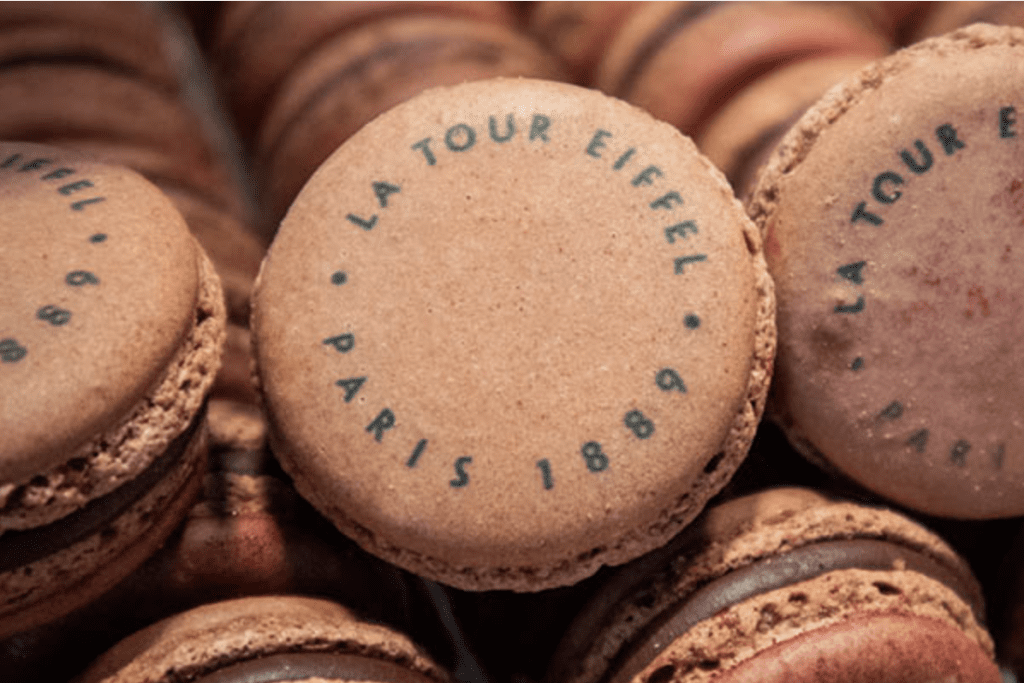
The experience of your first bite of macaron is unforgettable as you crack through the delicate outer shell and delve into a chewy filling of jam or ganache.
Where to get it: Ladurée—There are many Ladureé boutiques around the city.
La Soufflé

This comes in several variations: plain, au chocolat, or with Grand Marnier. I recommend trying them all.
Where to get it: Le Recamier—Near St. Germain
Cognac or Armagnac

After indulging in a satisfying meal, you might want something to aid digestion—this is where Cognac or Armagnac come into play.
Where to get it: Little Red Door—Is there a better place to try a special French drink than a Parisian speakeasy? (I don’t think so).
Are you a foodie looking for the best culinary experiences Paris has to offer? Check out The 16 Best French Foods and Drinks to Eat in Paris and The 9 Absolute Best Restaurants in Paris.
Tipping Etiquette in Paris:
In Paris, a service charge is included in your bill for dining out. There are, however, some occasions where you may want to add between 5% and 10% for a tip.
If you eat something small or get a coffee, no tip is expected. If you sit down and have a large meal where the waiter really adds to your dining experience, you should leave something extra. Here are some scenarios:
Dining: Sometimes tip.
Taxi: For longer trips, it’s good to tip.
Tour Guides: Always tip!
Porter or Bell Hop: Always tip!
Types of Restaurants in Paris
Restaurants & Sit-Down Meals
Paris is all about sitting down to a really good, heavy meal. From a Cafe to Michelin-star-rated fine dining, Paris is one of the best places on Earth to eat. Stinky cheese to the fattened liver, like it or not, these people know how to live at any animal’s expense. Let’s break down the types of places you can eat:
Restaurant
This name is quite generic and includes everything from Michelin starred establishments to more casual atmospheres. In general, a restaurant is where you will go for at least a three-course meal with no rush when eating.
Bistro
Originally a family-owned joint with local fare. Known to be chaotic eateries with a robust crowd and everyone sitting next to each other. Legend has it that the word originates from the Russian word pronounced the same which means “fast!”
Nowadays you have big-name chefs who have taken over and reinvented the Bistro brand, but you still might be sharing a table with someone else.
Brasserie
The word in French means Brewery and originally most were owned by the Alsatians (Eastern province in the mountains). So, dishes revolved around sausage, sauerkraut, and fresh beer.
Today, you can still find some classic brasseries and while they have changed the food a bit, they are still big establishments that are great for dining with groups of friends.
Cafe
These are places you find on every corner. They are no frills with cheaper, down-to-earth food. Open all day long, from breakfast to late at night. You can order just a drink or a whole meal.
Wine Bar
As the name implies, these are smaller, more intimate establishments where you can enjoy a glass or bottle of wine at a small table with some snacks or small plates of cheese and charcuterie. Check out our list of the best bars in Paris for some wine bar recommendations
Pâtisserie
These are traditionally pastry shops. Sometimes, there are tables to order and eat inside, but usually, it’s pick up and go. From cakes to chocolates to everything else sweet, a Pâtisserie is your sweet tooth’s best friend.
Boulangerie
Translated literally, boulangerie means bakery. If you want a baguette or a croissant, this is where you will go. It is not possible to eat inside a Boulangerie; they are take-away only. Check out our list of the Best Traditional Croissants and Patisserie in Paris.
Street Food
French food is far from perfect for street food. The French invented haute cuisine, which is better enjoyed sitting down. That said, today’s busy world has definitely forced even Parisians to adopt takeaway-type foods.
Let’s talk about some serious business, Paris street foods. Here are the essentials:
- Galette Brettones
- a sort of salty sandwich made with buckwheat crepes.
- Croissant
- Delicious sweet breakfast found at a Patisserie
- Baguette
- French bread found at a boulangerie.
- Falafel & Kebab
- Middle eastern street food adopted into French cuisine.
- Crepes
- Thin pancake-style dish served sweet or salty.
To experience French street food the right way, avoid chains and opt for small boulangeries—they’ll be cheaper and better! For more specific recommendations, check out our article on the best patisseries in Paris.
Finding Parisian boulangeries is not hard, they are everywhere. Once there, you will even find some already stuffed baguettes or salad, which could be a healthy option for a quick lunch outside.
To get a full taste of Parisian food, in one of the hippest neighborhoods, check out the Le Marais Paris Food Tour.
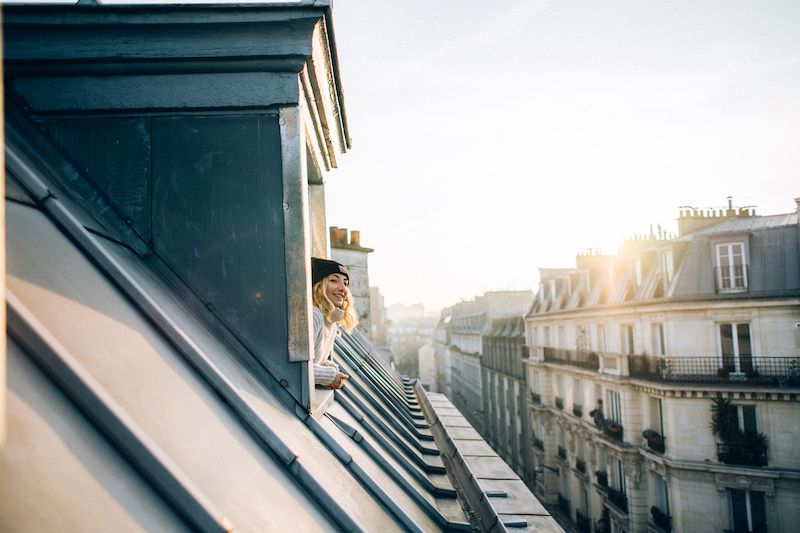
Where To Stay in Paris
With a city as magnificent as Paris, it can be hard to find the perfect hotel at the perfect price. Explore the best hotels and places to stay in these incredible neighborhoods in Paris.




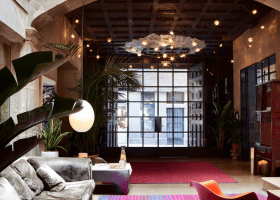
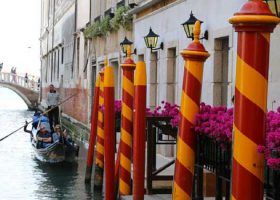




When we do citybreaks we tend to do a LOT of walking and don’t use public transport all that much. So for us, Paris’ Metro Carnet (book of 10 tickets) is perfect. Two great things about them:
1: They don’t expire so any leftover tickets can be kept & used for the next time you visit Paris.
2: They’re 10 individual tickets so you can hand tickets to friends who’re travelling with you and you both benefit from the cheaper price per ticket.
Great advice! We recommend the same.
Bonjour!
Regarding Le Marais food tour, is there a weekday you recommend or prefer? I will be in Paris in late April, early May 2020, traveling solo. I will check out your other tours too, thanks!
Hi Brenda! This is an awesome tour. We don’t operate our Le Marais Food tour on Sundays or Mondays, but any other day is great!
This post is very interesting and helpful! Specially for how is sorted by important points like transport, places in Paris in which you can stay or things you can do. Congratulations! Highly recommended for everyone who wants to visit the city. Greetings! 🙂
Very nice article, it really helps us to explore more beauty of Paris. We were traveling in a group of 4 so we decided to travel by Vueling airlines. The airline is quite amazing, due to sudden change in plans we all decided to stay in the city for a bit more. There was a very convenient Vueling cancel flight online procedure.
Realy, Paris is one of the best places to visit.